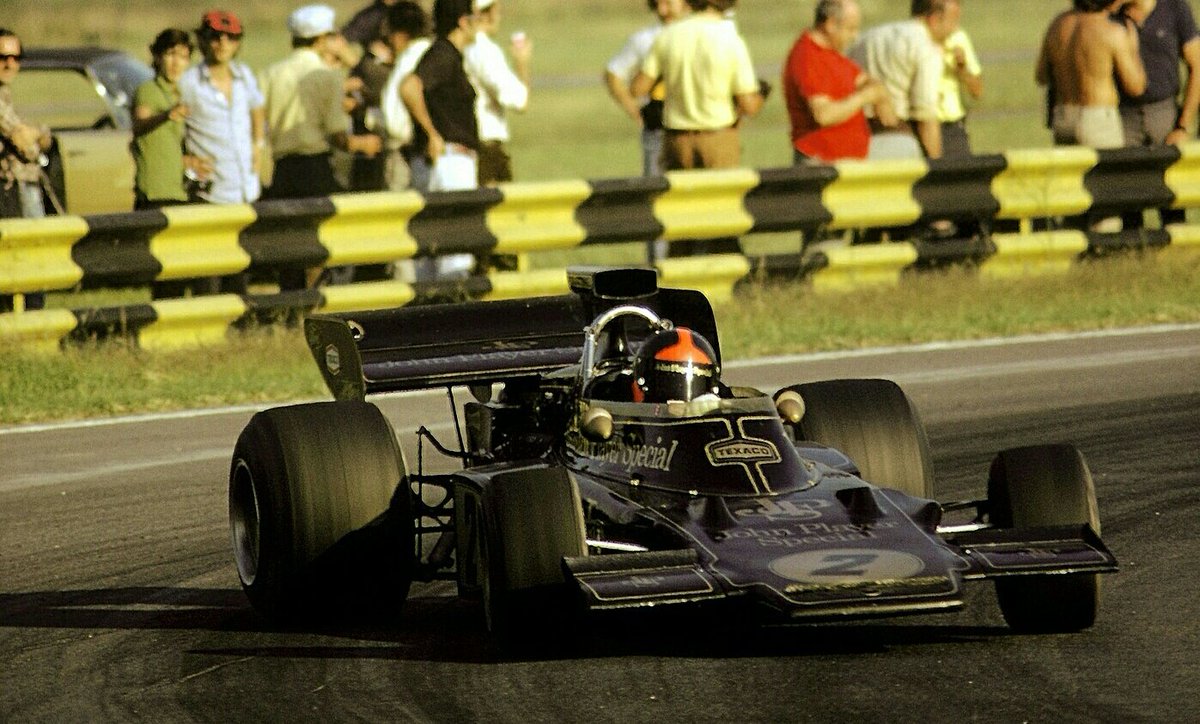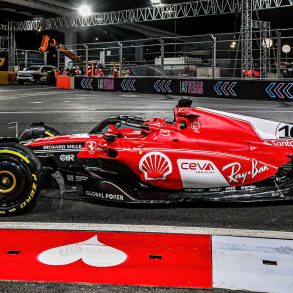1973 Argentine Grand Prix – Emerson Fittipaldi’s Greatest Race
By Emerson Fittipaldi
Before the 1973 Argentine Grand Prix, I knew exactly how a world champion in any sport must feel. A lot of other people want to have a crack at the champion and I was very much in the firing line when I prepared for this important race in Buenos Aires.
This was to be my first race since becoming World Champion and for me it was the most fiercely competitive contest I have ever entered. It was important to me because there were at least ten thousand of my Brazilian countrymen in Buenos Aires for the race and, anyway, the whole sub-continent wanted a South American victory in a field which included Europe’s finest drivers. I felt all these pressures on me under the extremely hot sun of Argentina. And how hot the sun was! We sweltered between practice laps at the autodrome on the outskirts of the city. Peter Lyon invented a slogan as he soaked up the sun. ‘The aires,’ he said, ‘are buenos.’ But most of us needed a cool breeze!
To add to the drama of the occasion there were some very tough security precautions for drivers because there had been one of those frequent scares that one of us would be kidnapped to help further the cause of some political gangsters. No matter! The race had to go on and soon we forgot about our value to South American politics and concentrated on the business of trying for the foremost position on the grid. I was very pleased with the performance of my John Player Special. My teammate Ronnie Peterson’s JPS had gearbox troubles, but despite this he managed to gain a good place on the starting grid just behind me.
Jackie Stewart and I were burning up some fast times during practice but we could not match the fast lap time of the Swiss driver Clay Regazzoni in a BRM who got the pole position with a time of 1 minute 10.4 seconds. My own time was second fastest with Stewart (Tyrrell Ford), Ickx (in a Ferrari), Cevert (Tyrrell), Peterson (JPS), Hulme (McLaren), and Beltoise (BRM) following immediately behind us. There were 19 starters in the race, which was over 96 laps, each lap being 2.121 miles and the whole race covering 203 miles.
There were 100,000 spectators to watch every one of those laps and they certainly had their money’s worth. For as it turned out there was hardly more than a few seconds between the leaders throughout the whole of the grueling 200-mile epic. It must have been a great race to watch and I can honestly say that it turned out to be the most difficult race of my career.
At four-thirty the starter’s flag fell and immediately the grid order was upset by Cevert who made a sensational start from the third row back and shot into the lead. Regazzoni took back the lead almost at once at the first of the two sharp corners. Cevert was second with Ronnie and I following in the team JPS’s, Beltoise in fifth place, Ickx sixth, Hulme (McLaren) seventh, and Jackie Stewart’s Tyrrell trailing at number eight. My policy at this stage of the race was to drive carefully, not to use too much accelerator out of the slow corners because, with tanks heavy with petrol, and a road you could fry eggs on, the tyres would become very over heated. For the first 10 laps there were hardly any changes of position except that Jackie Stewart overtook a couple of cars to become a more threatening and therefore a more interesting opponent.
The leaders were nose to tail with the leader Regazzoni, the only driver able to put a little day-light between his vehicle and the rest of the pack. He held off opposition until lap 29 when I believe he found his Marlboro-BRM difficult to handle because its tyres lost their adhesion due to the overheating I had been trying so hard to avoid on my own. Finally he surrendered the lead to Cevert. I saw that the very determined Stewart had moved up to second place leaving me the chance to take Regazzoni by the 34th lap. My teammate Peterson also passed Regazzoni and at this stage the leading drivers were Cevert, Stewart, myself, Peterson, and Regazzoni.

Fifty, 60 and finally 70 laps went by before I took a vital decision. I would brake very late, I mean very, very late, on the right-hand bend. I held on, screaming into the corner, watching it race towards me and finally I touched the anchors and managed to squeeze past Jackie on the inside. Jackie had been trying to close the gap between himself and François Cevert and told me after the race that he did not believe my John Player Special could possibly have achieved the speed it did after it passed him.
Once I had got Jackie out of the way it was no longer a question of playing a waiting game: just to get as much speed as possible out of the JPS to make up the distance between me and the leader before planning another strike. In fact during the next 6 laps up to 76 laps I clocked the fastest lap of the race after passing Jackie. The supreme effort of the engine paid off and again I found myself having to solve the same problems that I had met behind Stewart’s Tyrrell Ford. Cevert, driving the same car, could certainly open up on the straight; I could not stay too close to him on the very fast corners but in the middle of the circuit I had some advantage because I could drive quicker on these corners and brake a little later.

It was certainly the most difficult race of my life; the cars and drivers were so evenly matched at the head of the field. I am proud to have won in such company.
1973 Argentine Grand Prix Results
| 1st | Emerson Fittipaldi | Lotus | 1h 56m 18.2s |
| 2nd | Francois Cevert | Tyrrell | 1h 56m 22.9s |
| 3rd | Jackie Stewart | Tyrrell | 1h 56m 51.4s |











